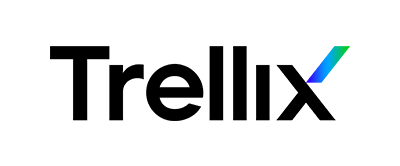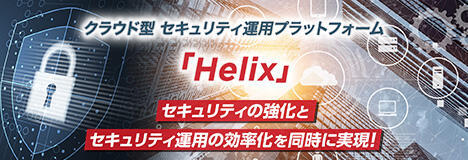product
- Line up
- Network Security: Trellix (formerly FireEye) Network Security
- Network Security: Trellix (formerly McAfee) Advanced Threat Defense
- Network Security: Trellix (formerly McAfee) Network Security Platform
- Endpoint: Trellix (formerly FireEye) HX
- Endpoint: Trellix (formerly McAfee) Mvision
- Data Protection: Trellix Data Security
- Email Security: Trellix (formerly FireEye) Server Edition
- Email Security: Trellix Cloud Edition
- Security Operations: Trellix (formerly FireEye) Helix
- Security Operations: Trellix (formerly McAfee) SIEM (Security Information and Event Management)
- Enhanced cloud governance: Trellix (formerly FireEye) Cloudvisory
- File Security: Trellix (formerly FireEye) Malware File Storage Scanning
- Integrated Management Solution: Trellix (formerly FireEye) Central Management
- NDR Solution: Network Investigator (NI) / Packet Capture (PX)
- Cloud-based File Threat Protection: Trellix IVX Cloud
Specifications/Technical Information
- Trellix (formerly FireEye) Technical Information
- Trellix (formerly FireEye) Specifications
- Network Security: Trellix (formerly FireEye) Network Security Technical Information
- Network Security: Trellix (formerly McAfee) Network Security Platform Technical Information
- Network Security: Trellix (formerly McAfee) Network Security Platform Specifications
- Network Security: Trellix (formerly McAfee) Advanced Threat Defense Technical Information
- Network Security: Trellix (formerly McAfee) Advanced Threat Defense Specification
- Email Security: Trellix (formerly FireEye) Server Edition EX Series Technical Information
- Email Security: Trellix (formerly FireEye) Server Edition EX Series Specifications
- Integrated Management Solution: Trellix (formerly FireEye) Central Management (CM) Series Specifications
- Security Operations: Trellix (formerly McAfee) SIEM (Security Information and Event Management) Technical Information

Trellix
Trellix
Security Operations (2) - What is next-generation SIEM that saves security teams?

A survey of customers conducted by Trellix (formerly FireEye) revealed that most organizations have more than 10,000 alerts per day. However, most of these are false positives or low severity alerts, and few organizations can investigate and respond to all of them.
米国大手デパートへの攻撃を例にとると、この企業が攻撃を受けた際、セキュリティツールが生成した同攻撃に対するアラート数は3カ月半強で60,000件に達しました。
It's hard to believe that the company failed to respond to any alerts, but it may make sense given that the number of alerts related to this attack accounted for less than 1% of all alerts.
Mass alert problem
The more alerts you have, the more likely it is that a really important alert will be missed. A constant stream of false positives and low-severity alerts can leave incident teams numb and unnerved.
If security teams were to investigate all alerts, they would also have to investigate false positives and low-severity alerts, which account for 99% of all alerts, making it extremely difficult to find the 1% of critical alerts. will be
Determining Critical Alerts
How do security teams decide which alerts need attention? The crux of the problem is that most security solutions cannot distinguish between mundane malware and advanced targeted attacks. Mundane malware can be easily contained and resolved, but advanced targeted attacks require a more thorough and superior response.
Implemented in multiple stages and flows, today's advanced attacks often leverage credentials and misconfigured clouds to spread laterally across networks in a flood of malware detection solutions. can be seen in
Security measures that rely on signatures and reputations fail to detect many of these advanced attacks. Also, file-based Box do not correlate events that are related to each other.
Security teams need to be able to spot activity on multiple seemingly unrelated vectors, such as multi-vector web and email attacks.
To that end, instead of raising alerts for all anomalies, we need security measures that allow us to know which ones are really important by scrutinizing, analyzing, and prioritizing them.
Problems with traditional SIEM
Most organizations have turned to SIEMs to manage vast amounts of security data. This tool is a tool that, when used correctly, can centralize and visualize event data coming from multiple sources. However, in today's ever-changing threat landscape, traditional SIEMs are no longer viable. Traditional SIEM products have not solved the underlying problem of too many alerts, relying on intelligence from third parties to provide the additional context needed for effective triage and investigation. Hmm.
Therefore, security teams still have to manually parse large amounts of information.
An automated security operations platform has the answer. It can centralize security data and infrastructure and provide visibility into different security tools. As a next-generation SIEM, the platform centralizes data and integrates user behavior analysis, task automation, and contextual information for risk determination to manage cases, investigate workflows, and analyze attacks in progress. It is also possible to automatically triage against
Summary
Organizations have deployed a ton of products over the years, but the sheer volume of alerts doesn't help identify real threats and support security teams.
Security teams don't need alerts that slow them down, they need alerts that accelerate their work. Ultimately, the value of a security solution is not determined by the number of alerts. The key is to detect real threats, provide quality alerts, and provide rich context and insights to help take action. The security platform introduced this time will be the solution.
This time, I introduced some excerpts from the white paper SIEM: Breaking out of the “wolf boy” and introduced what SIEM/SOAR products are really necessary. We would appreciate it if you could help us with future security operation considerations.
Inquiry/Document request
In charge of Macnica Trellix Co., Ltd.
- TEL:045-476-2010
Weekdays: 9:00-17:00


